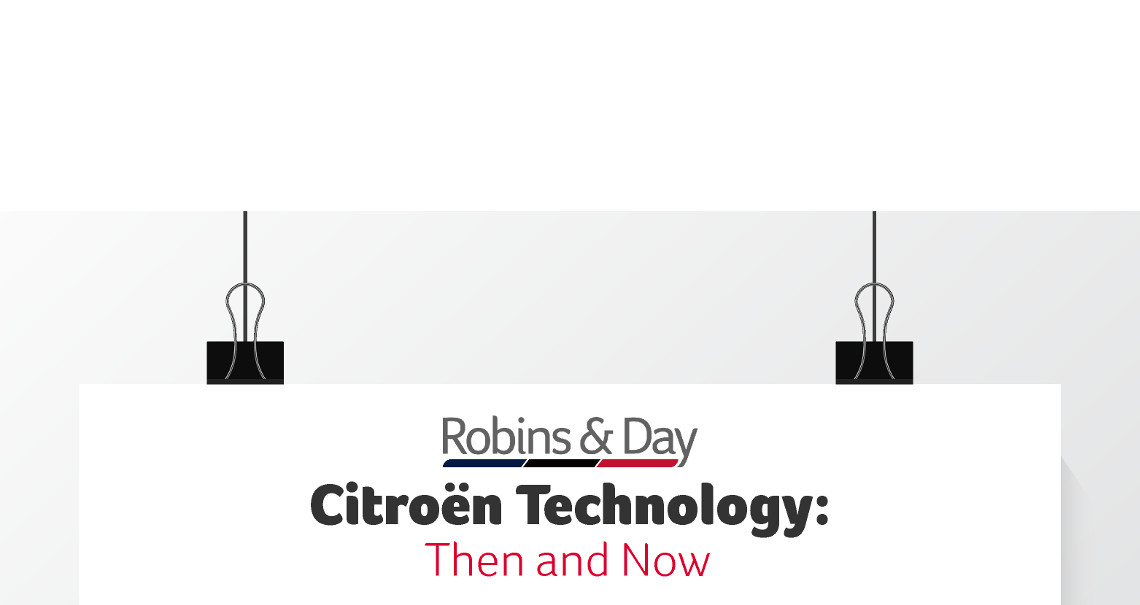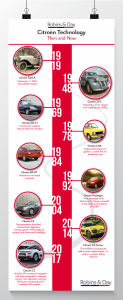In nearly one hundred years of producing cars, Citroën has seen the technology it uses change almost beyond recognition. While similar values and styles have been upheld, it would have been hard to imagine the same company that manufactured the first Citroën Type A back in 1919 would one day develop a vehicle as sophisticated and advanced as the New Citroën C3. Yet that’s exactly what has happened, which got us thinking; how has the technology used in Citroën vehicles changed over the years?
1919 - Citroën Type A
In 1919 the first ever Citroën car was produced, the Type A. It featured a 1,323cm³ four-cylinder engine, delivering a top speed of 65 km/h (40 mph), which was impressive for the time. Its two main technological features appear to have been a pair of front headlights and a brass squeeze horn.
1948 - Citroën 2CV
One of the brand’s most iconic vehicles, the Citroën 2CV was launched just after the end of the Second World War. This model best showcases the brand’s advancements in technology, produced from 1948 to 1989, with the original featuring a 375cc engine and weighing just 500kg. There was no heating, air conditioning or a fuel gauge; an air-cooled engine and two windscreen wipers were its main tech features.
Advancements in technology meant it later featured mechanical and then electric windows, a fuel gauge, electric windscreen wipers, heating, air conditioning and more, from the 1950s through to the late 1980s. However, the electric motor powering such technology did mean that it became a more modern yet less efficient vehicle as it developed.
1969 - Citroën DS 21
The Citroën DS 21 was the first French production model to feature electronic injection when it was updated in 1969. This technology had been used by various American car production companies in the late 1950s, but Citroën were the first French and one of the first European brands to do so. The technology soon replaced the preceding carburettor engine tech for most first world cars throughout the 1970s and 80s.
1978 - Citroën LNA
At the Paris Motor Show in 1978, Citroën unveiled the LNA and Visa models. Both of these featured full electronic ignition, which was a world first on production cars. The LNA went on sale in France and much of Europe the same year, but was not made available in the UK until 1983. By this point, a number of other cars also featured fully electronic ignition.
1984 - Citroën BX 19 Digit
Welcoming in the new technological age, the BX 19 Digit was a limited edition version of Citroën’s BX 19 GT, that was sold in France and nine other European countries in 1985. Only 3,000 were produced but it was an important car as it featured an on-board computer, electronic dashboard, remote control for locking and controlling internal lighting and more. In many ways, it was ahead of its time and a sign of things to come.
1992 - First Citroën Electric Car
The very first prototype of an all-electric car developed by Citroën was unveiled at the Universal Exposition of Seville in 1992. The Citroën Citela had a range of 210 km and a top speed of 110 km/h, with two rechargeable sockets under the registration plate. Twenty years later and the trend for electric cars has really taken off.
2004 - Citroën C4
The first generation of the compact Citroën C4 was launched in 2004 and featured many of the modern technology we’re now accustomed to in most vehicles. The top trim level was streaks ahead, with a lane departure warning system, MP3 playback support and directional headlights. Its extensive use of technology was an early signal of how far Citroën had come in terms of car technology and was willing to innovate.
2014 – Citroën C4 Cactus
Airbump technology was introduced with the Citroën C4 Cactus when it was released in 2014 (also available on the new C3). As well as providing a unique styling element, these add extra safety thanks to their air-filled microcapsules. Watch the official video for more information.
2017 - New Citroën C3
The New Citroën C3 is a technological masterpiece. It includes both a blind spot monitoring system and lane departure warning, along with a reversing camera to make driving even easier. 3D navigation with voice recognition is included too, along with its ConnectedCAM Citroën, which is a HD camera that can be used to film your journeys.
This is all a far cry from having to manually open windows with your elbow when the 2CV was first released back in 1948, demonstrating how far the technology in Citroën cars has come. Which do you think has been the most important introduction of vehicle technology?

 Find us
Find us
 Contact Us
Contact Us


 My account
My account














